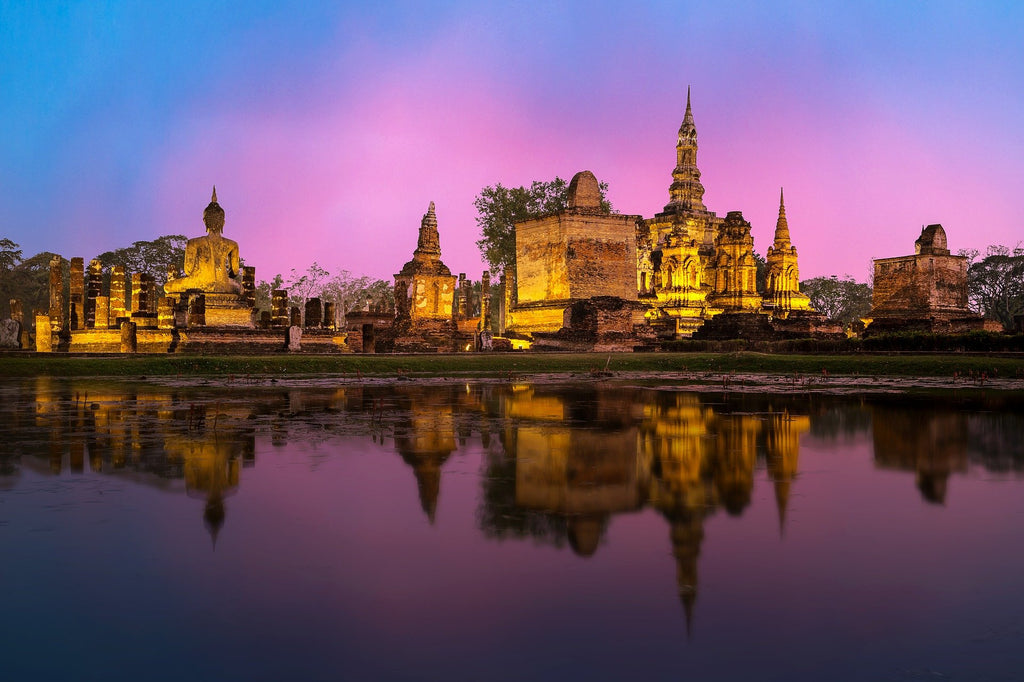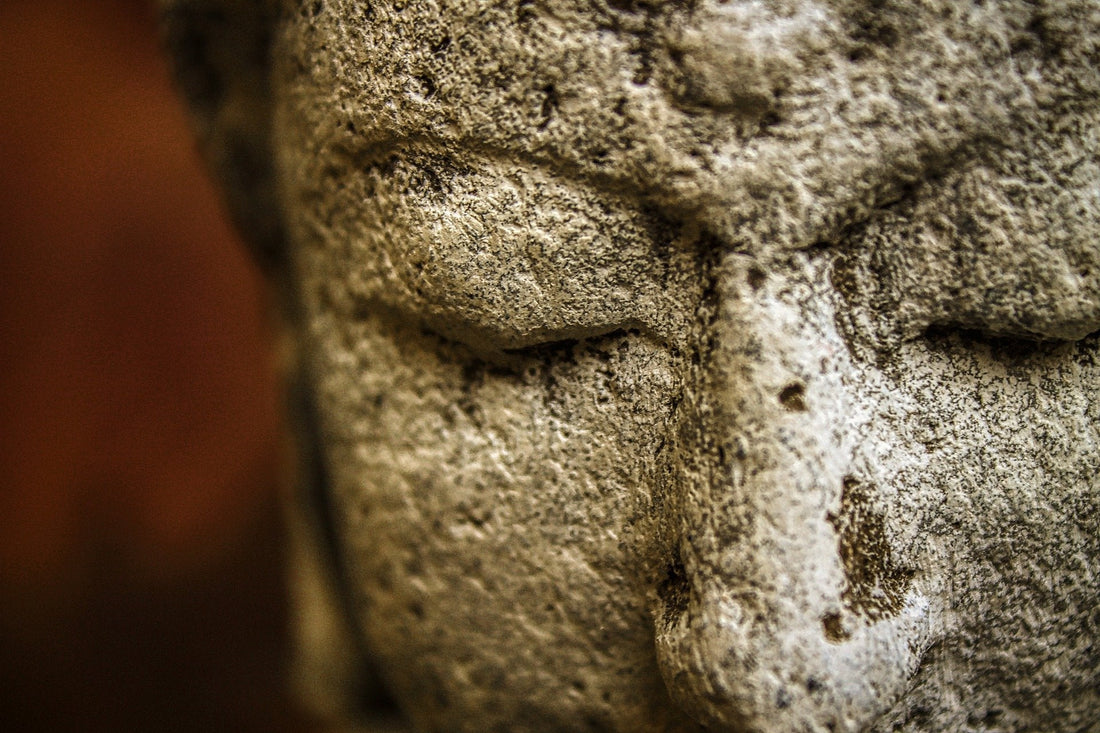Why Do Buddhists Have Statues?
Buddha statues hold a deep spiritual significance within Buddhism. They are not merely decorative items; instead, they serve to remind practitioners of the Buddha's teachings and guide them on their path to enlightenment. These statues can be found in temples, homes, and meditation spaces, playing a key role in daily practices.
While they might appear to be idols, they are far more than that – symbols of wisdom, compassion, and the quest for inner peace. Let’s explore the significance of Buddha statues and why they have such an essential place in Buddhist practice.
The Deep Spiritual Meaning Behind Buddha Statues
Buddha statues aren’t just beautiful sculptures; they are powerful symbols that carry a profound spiritual message. They remind Buddhists of the qualities that are necessary for enlightenment – stillness, wisdom, compassion, and peace.
- Symbols of Awakening: Buddha statues represent the Buddha's teachings on how to achieve enlightenment. The peaceful expressions and serene postures invite inner reflection, reminding practitioners to cultivate the same qualities of stillness and clarity.
- Encouragement for Meditation: These statues also serve as focal points for meditation. In my experience, sitting in front of a Buddha statue helps centre my mind, providing a point to focus on during meditation. It brings a sense of calm that’s deeply rooted in the Buddha’s example.
- Expression of Respect: When Buddhists bow or offer incense before a Buddha statue, it’s a show of respect, not worship. It’s a symbolic gesture, acknowledging the Buddha's enlightened qualities and the path that one seeks to follow.
- Why Do Buddhists Have Buddha Statues?
The presence of Buddha statues is not about idol worship but serves several important purposes for practitioners.
A Visual Reminder of the Buddha’s Teachings
Buddha statues are not worshipped as gods but are powerful symbols reminding practitioners of the Buddha's path to enlightenment. These statues serve as:
- Inspiration for Inner Growth: Every time I sit before a Buddha statue, it’s as if I’m reminded of the qualities I wish to embody – peace, compassion, and wisdom. The Buddha's serene expression is a reminder of the calm that lies within us all.
- Focus for Reflection: When the mind is scattered, focusing on the calm face of the Buddha helps to restore clarity. It’s a gentle nudge to redirect the mind toward spiritual goals.
Buddha Statues as Focal Points for Meditation
One of the key purposes of Buddha statues is to serve as a focal point for meditation. The stillness of the statue can help guide a practitioner into a meditative state. Here’s why:
- Grounding the Mind: When sitting in front of a Buddha statue, it’s easier to let go of distractions and bring the focus back to the breath. The statue acts as an anchor during meditation, reminding us to stay present.
- Encouraging Positive Qualities: Meditation in front of a Buddha statue encourages the cultivation of qualities such as compassion, wisdom, and equanimity, as these are the teachings the statue represents.
- Expression of Respect and Devotion
While it might appear to some as idol worship, for Buddhists, bowing before a Buddha statue is a symbolic expression of respect and devotion to the Buddha and his teachings.
- Acknowledge the Buddha's Qualities: It’s an expression of humility, recognising the Buddha’s enlightened qualities and the intention to develop these qualities within oneself.
- Deep Faith: The act of bowing signifies the practitioner’s faith in the path of the Buddha and a commitment to following his teachings, striving for personal transformation and inner peace.
Symbolising the Buddha’s Presence
Buddha statues are often seen as embodiments of the Buddha’s spiritual energy and presence. They act as:
- Blessings and Protection: Statues represent the Buddha’s energy and serve as conduits for blessings and spiritual protection. For example, I once visited a Thai temple, and the Buddha statue there seemed to exude a sense of calm that made me feel protected, as though the Buddha himself were watching over us.
- A Gateway to the Spiritual Realm: The Buddha statues are considered vessels that channel the Buddha’s energy, helping practitioners connect with his teachings on a deeper level.
Cultural and Artistic Expression
In addition to their spiritual and symbolic significance, Buddha statues are also a form of cultural expression. The diversity in how Buddha statues are crafted reflects the varying traditions, artistic styles, and cultural influences across Buddhist regions.
- Unique Regional Styles: Whether it’s the golden Buddha statues of Thailand or the intricate Tibetan Buddhist statues, each style reflects the local culture, beliefs, and craftsmanship of the people. This is an example of how Buddhism has adapted to local traditions while maintaining the same underlying teachings.
- Craftsmanship and Devotion: The making of Buddha statues is considered an act of devotion. Skilled artisans follow strict guidelines, ensuring that the statue is not only a representation of the Buddha’s teachings but also a work of art that honours these principles.

Buddha Statues Across Cultures: Variations and Styles
Buddha statues are not one-size-fits-all; they vary greatly depending on the region and the culture that created them. These differences reflect local traditions, artistic styles, and interpretations of the Buddha’s teachings. Let's take a look at some of the most significant regional variations.
Tibetan Buddhist Statues
Tibetan Buddhist statues are often rich in detail, with elaborate ornamentation and vivid colour. These statues typically depict the Buddha or various Bodhisattvas—enlightened beings who have chosen to remain in the world to assist others on their spiritual journey.
- Symbolising Wisdom and Compassion: Tibetan statues are often crafted with a high degree of detail, reflecting the union of wisdom and compassion. Their intricate designs make them stand out as symbols of the profound spiritual journey that Tibetan Buddhists undertake.
- Purpose: In Tibetan Buddhism, statues serve as both focal points for meditation and as symbols of blessings. When I’ve visited Tibetan monasteries, I’ve always felt a deep sense of reverence for these statues, as they embody the teachings and compassion of the Buddha.
Thai Buddha Statues
Thai Buddha statues are often golden, symbolising the purity and spiritual wealth associated with the Buddha’s teachings. These statues are found in temples, homes, and gardens throughout Thailand, each one meticulously crafted to convey both beauty and spiritual meaning.
- Golden Buddha Statues: In Thailand, Buddha statues are often gilded in gold, a symbol of enlightenment and the highest state of spiritual purity. I’ve seen the famous Golden Buddha in Bangkok, and the sight of its gleaming surface reflects the profound respect the Thai people have for the Buddha and his teachings.
- Symbol of Prosperity and Protection: Thai Buddha statues are often placed in homes to bring prosperity, good fortune, and protection. It’s common to see these statues sitting in meditative postures, radiating peace and calm. I’ve personally visited many homes where a small Buddha statue graced the living room, bringing a sense of spiritual calm to the space.
Zen Buddhist Statues
Zen Buddhism, which originated in Japan, is known for its minimalist approach to life, and this is reflected in the Zen Buddha statues. These statues are typically simpler than those in other traditions, focusing on serene and simple forms.
- Emphasising Simplicity: Zen statues are often made with simple lines and minimal adornment. They represent the Zen philosophy of living simply and mindfully. I’ve seen Zen statues in several gardens and meditation spaces that embody this simplicity, inviting a peaceful state of mind.
- Encouraging Present Moment Awareness: The understated elegance of Zen statues encourages mindfulness in everyday life. Their simplicity fosters a sense of presence in the here and now, helping practitioners stay focused on the moment without distraction.

Placement and Care of Buddha Statues
The placement and care of Buddha statues are crucial for respecting their spiritual role and maintaining their symbolic significance. In Buddhist practice, where you place the statue and how you care for it can greatly influence the energy of the space and the effectiveness of the statue as a spiritual tool.
Respectful Location
To show the proper respect for a Buddha statue, it must be placed in a location that honours its significance. Here are some guidelines for respectful placement:
- Elevated Position: The Buddha statue should never be placed directly on the floor. It should be placed on a pedestal, platform, or altar, ensuring that it is elevated above the level where people sit or walk. This shows respect and honours the statue as a representation of the Buddha’s teachings.
- Avoid Distractions: It’s considered disrespectful to place Buddha statues in places that are distracting or unclean, such as on windowsills, near bathrooms, or in cluttered areas. When I visit Buddhist temples or homes, I’ve always noticed that the most powerful statues are placed in serene, clean spaces that allow the Buddha’s presence to shine through.
- Facing the Right Direction: Many cultures suggest that Buddha statues should face east, symbolising the reception of the first rays of sunlight, which represent spiritual awakening. I’ve also seen statues positioned facing the front door to protect the home from negative energy and to welcome peace.
Material and Feng Shui
The material of the statue can also influence its placement, especially when considering the principles of Feng Shui, a practice that emphasises the flow of energy (chi) in the environment.
- Wooden Statues: Wood is associated with the east and represents growth, vitality, and spring. Placing a wooden Buddha statue in the east of your home or meditation space is believed to promote renewal and prosperity.
- Metal Statues: Metal is associated with the west and represents autumn and clarity. A metal Buddha statue can be placed in the west to encourage discipline, strength, and spiritual clarity.
- Stone and Brass: Stone and brass statues are often considered grounding and stable. I’ve often seen brass statues in meditation gardens, where their solid, unyielding nature encourages deep introspection and focus.
Care and Maintenance
The care and maintenance of a Buddha statue reflect the respect and reverence a practitioner holds for the Buddha’s teachings. Keeping a statue clean and in good condition is a form of spiritual practice.
- Regular Cleaning: Buddha statues should be cleaned regularly. Dust and dirt should not be allowed to accumulate, as they can create a sense of neglect. I’ve always found that cleaning a statue not only keeps it looking beautiful but also helps bring a sense of clarity and calm to my mind.
- Handling with Respect: If the Buddha statue is consecrated (having undergone a sacred ritual), extra care should be taken. It should never be touched with unclean hands, and it should not be used for non-religious purposes.
- Mindful Practices: Caring for the statue can become a mindful practice. The act of wiping away dust can become a metaphor for clearing away distractions in the mind. This ritual helps maintain a connection to the Buddha’s teachings and keeps the space sacred.
Buddha statues are not mere decorative pieces; they are profound symbols that embody the Buddha’s teachings. From serving as a reminder of the path to enlightenment to acting as focal points for meditation, these statues have deep spiritual significance.
By understanding the different forms of Buddha statues, the symbolism behind the gestures and postures, and the respectful care needed to maintain them, we can deepen our connection to the Buddha’s wisdom and cultivate inner peace. They are not idols to be worshipped but representations of the qualities we aspire to embody.

